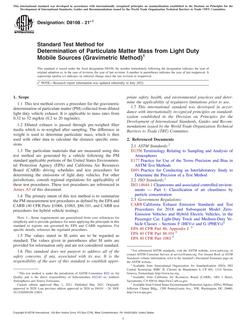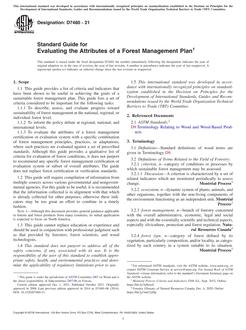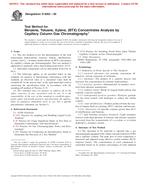1.1 This practice is one of several (see Appendix X1) developed to assist operators of nuclear facilities with meeting the metal detection performance requirements set by regulatory authorities.
1.2 This practice consists of four procedures useful for evaluating the in-plant performance of walk-through metal detectors (see Fig. 1).
1.2.1 Two of the procedures provide data for evaluating probability of detection. These procedures use binomial data (alarm/not alarm).
1.2.1.1 The detection sensitivity test (DST) is the initial procedure in the detection probability evaluation series. It is used to establish the probability of detection immediately after the detector has been adjusted to its operational sensitivity setting.
1.2.1.2 The detection sensitivity verification test (DSVT) procedure periodically provides data for evaluation of continuing detection performance.
1.2.2 The third procedure is a “functional test.“ It is used routinely to verify that a metal detector is operating and responds with the correct audio and visual signals when subjected to a condition that should cause an alarm.
1.2.3 The fourth procedure is used to verify that alarms generated during detection sensitivity testing were likely the result of the detection of metal and not caused by outside interferences or the perturbation of the detection field by the tester's body mass.
1.2.3.1 This procedure also can be used to establish a probability of occurrence for false alarms, for example, 20 test passes by a clean-tester resulting in no alarms indicates a false alarm probability of less than 0.15 at 95 % confidence. This procedure is optional unless required by the regulatory authority.
1.3 This practice does not set test object specifications. The specifications should be issued by the regulatory authority.
1.4 This practice is intended neither to set performance levels nor to limit or constrain technologies.
1.5 This practice does not address safety or operational issues associated with the use of walk-through metal detectors.

Note 1 – The number of detection sensitivity verification tests in a series, the number of passes per test, the acceptance criteria, and the frequency may be established by regulatory authority or set by the security organization based on threat scenarios or vulnerability assessments; the numbers should be sufficient to provide a degree of assurance commensurate with the detector application.
Note 2 – If the detector fails to meet the acceptance criteria, the verification series is terminated. The detector then must be tested to reestablish the probability of detection. If the probability of detection requirement cannot be met (repairs may be necessary), the detector must be mapped and the operational sensitivity setting reestablished. Performance testing can then be resumed starting with a new detection sensitivity test.
Note 3 – If the detector fails the functional test, the detector must be immediately removed from service (see Appendix X1).
FIG. 1 Walk-Through Metal Detector Evaluation Testing Program
Product Details
- Published:
- 01/01/2012
- Number of Pages:
- 15
- File Size:
- 1 file , 220 KB


